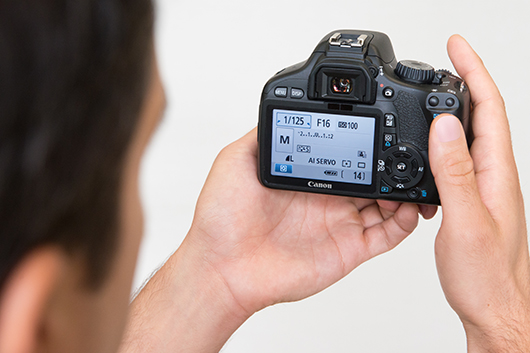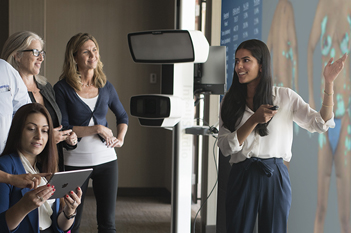Understanding Camera Settings
All digital cameras have an "Automatic" mode that will produce acceptable results for snapshots and other casual uses. This setting is not well-suited to medical photography, where more control is needed to assure consistently good results. For this reason, we recommend that cameras used in medical photography have a "Manual" mode of operation that allows the user to adjust the camera settings.
How camera settings affect your pictures
 Manual camera settings provide important
Manual camera settings provide importantcontrols for medical photography.
Aperture: Aperture controls exposure by letting in more or less light, and is expressed in f-stops. The higher the f-stop number, the smaller the opening. Aperture also controls depth of field, the plane in which items in the photo are in focus. Generally speaking, you will want to use smaller apertures to ensure all the anatomy in a clinical photo is in focus.
Shutter speed: The longer the shutter is open, the more light enters the camera and the brighter the final image. Shutter speed can affect picture clarity. Long exposures allow more time for the patient or photographer to move, which could result in a blurry image. Set your shutter speed at 1/60 or faster to minimize motion on either side of the camera. When using flash, the shutter speed is usually set at 1/60, since exposure time is determined by the duration of the flash itself.
White Balance: This takes into account the color temperature of the light source on the subject. Matching the white balance of the camera to the color temperature of the lighting (e.g., flash or daylight) will assure that all colors in the subject are recorded correctly. In some unusual lighting situations, a custom white balance may be required.
ISO: The higher the ISO, the greater the light sensitivity of the camera. Using a high ISO could be useful in low light situations, but will degrade the overall quality of the image. Always use the lowest ISO possible.
Controlling settings with tethered capture
Canfield's Mirror® PhotoTools software supports tethered capture for a number of Nikon® and Canon® digital cameras. In this mode of operation, camera functions are controlled through a USB cable connection to a host computer, and the pictures are captured directly into a patient database. Importantly, all of the camera settings are controlled by templates in the software, assuring consistent clinical quality photographs. A selection of standard templates is provided with the software, and custom templates can be easily created for specialized applications.
